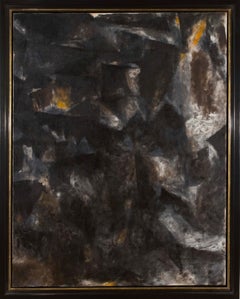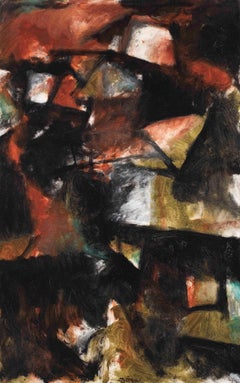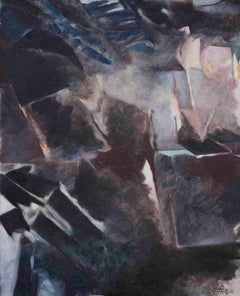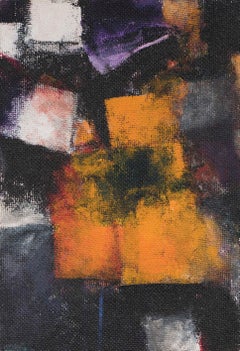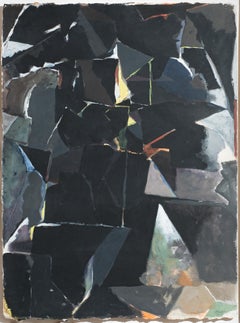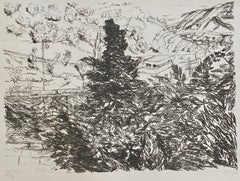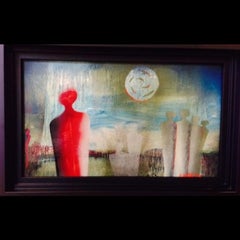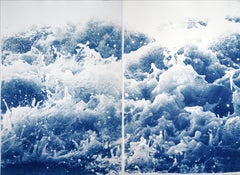Avigdor Arikha Art
to
7
5
7
5
1
8
1
2
Overall Height
to
Overall Width
to
7
7
3
2
1
1
12
7
12
6,827
3,114
2,517
1,217
7
5
4
3
3
Artist: Avigdor Arikha
Untitled, 1965
By Avigdor Arikha
Located in London, GB
oil on canvas
Category
20th Century Avigdor Arikha Art
Materials
Canvas, Oil
Sombre
By Avigdor Arikha
Located in London, GB
oil on canvas
Category
20th Century Avigdor Arikha Art
Materials
Canvas, Oil
Jet
By Avigdor Arikha
Located in London, GB
oil on canvas
Category
20th Century Avigdor Arikha Art
Materials
Canvas, Oil
Composition in orange and black
By Avigdor Arikha
Located in London, GB
signed and dated (lower left)
Category
20th Century Avigdor Arikha Art
Materials
Masonite, Oil
Abstract composition in black
By Avigdor Arikha
Located in London, GB
Gouache on paper
Category
20th Century Avigdor Arikha Art
Materials
Gouache
Avigdor Arikha Modernist Israeli Lithograph Jerusalem Landscape Bezalel School
By Avigdor Arikha
Located in Surfside, FL
Hand signed in pencil and hand numbered lithograph on fine French Arches paper.
Jerusalem Landscape.
Avigdor Arikha (April 28, 1929 – April 29, 2010) was a Romanian-born French–Israeli painter, draughtsman, printmaker, and art historian.
Avigdor Arikha (originally Victor Długacz) was born to German-speaking Jewish parents in Radauti, but grew up in Czernowitz in Bukovina, Romania (now in Ukraine). His family faced forced deportation in 1941 to the Romanian-run concentration camps of Transnistria, where his father died. He survived thanks to the drawings he made of deportation scenes, which were shown to delegates of the International Red Cross.
Arikha immigrated to Palestine in 1944, together with his sister. Until 1948, he lived in Kibbutz Ma'ale HaHamisha. In 1948 he was severely wounded in Israel's War of Independence. From 1946 to 1949, he attended the Bezalel School of Art in Jerusalem. In 1949 he won a scholarship to study at the Ecole des Beaux Arts in Paris, where he learned the fresco technique. From 1954, Arikha resided in Paris. Arikha was married from 1961 until his death to the American poet and writer Anne Atik, with whom he had two daughters.
In the late 1950s, Arikha established himself as an abstract painter, but he eventually came to think of abstraction as a dead end. In 1965 he stopped painting and began drawing, only from life, treating all subjects in a single sitting. He engaged in drawing and printmaking only for the next eight years. In 1973, he resumed painting and became "perhaps the best painter from life in the last decades of the 20th century", as he was hailed in an obituary in Economist magazine.
Arikha painted directly from the subject in natural light only, using no preliminary drawing, finishing a painting, pastel, print, ink, or drawing in one session. His profound knowledge of art techniques and masterly draughtsmanship enabled him to abide by this principle of immediacy, partly inspired by Chinese brush painting. It was a principle he shared with his close friend Henri Cartier-Bresson, to whose "instant décisif" it was analogous.
He never drew from memory or photographs, aiming to depict the truth of what lay before his eyes at that moment. He is noted for his portraits, nudes, still lifes, and landscapes, rendered realistically and spontaneously. In their radi...
Category
1970s Modern Avigdor Arikha Art
Materials
Lithograph
Avigdor Arikha Modernist Israeli Lithograph Jerusalem Landscape Bezalel School
By Avigdor Arikha
Located in Surfside, FL
Hand signed in pencil and hand numbered lithograph on fine French Arches paper.
Jerusalem Landscape.
Avigdor Arikha (April 28, 1929 – April 29, 2010) was a Romanian-born French–Israeli painter, draughtsman, printmaker, and art historian.
Avigdor Arikha (originally Victor Długacz) was born to German-speaking Jewish parents in Radauti, but grew up in Czernowitz in Bukovina, Romania (now in Ukraine). His family faced forced deportation in 1941 to the Romanian-run concentration camps of Transnistria, where his father died. He survived thanks to the drawings he made of deportation scenes, which were shown to delegates of the International Red Cross.
Arikha immigrated to Palestine in 1944, together with his sister. Until 1948, he lived in Kibbutz Ma'ale HaHamisha. In 1948 he was severely wounded in Israel's War of Independence. From 1946 to 1949, he attended the Bezalel School of Art in Jerusalem. In 1949 he won a scholarship to study at the Ecole des Beaux Arts in Paris, where he learned the fresco technique. From 1954, Arikha resided in Paris. Arikha was married from 1961 until his death to the American poet and writer Anne Atik, with whom he had two daughters.
In the late 1950s, Arikha established himself as an abstract painter, but he eventually came to think of abstraction as a dead end. In 1965 he stopped painting and began drawing, only from life, treating all subjects in a single sitting. He engaged in drawing and printmaking only for the next eight years. In 1973, he resumed painting and became "perhaps the best painter from life in the last decades of the 20th century", as he was hailed in an obituary in Economist magazine.
Arikha painted directly from the subject in natural light only, using no preliminary drawing, finishing a painting, pastel, print, ink, or drawing in one session. His profound knowledge of art techniques and masterly draughtsmanship enabled him to abide by this principle of immediacy, partly inspired by Chinese brush painting. It was a principle he shared with his close friend Henri Cartier-Bresson, to whose "instant décisif" it was analogous.
He never drew from memory or photographs, aiming to depict the truth of what lay before his eyes at that moment. He is noted for his portraits, nudes, still lifes, and landscapes, rendered realistically and spontaneously. In their radi...
Category
1970s Modern Avigdor Arikha Art
Materials
Lithograph
Avigdor Arikha Modernist Israeli Lithograph Jerusalem Landscape Bezalel School
By Avigdor Arikha
Located in Surfside, FL
Hand signed in pencil and hand numbered lithograph on fine French Arches paper.
Jerusalem Landscape.
Avigdor Arikha (April 28, 1929 – April 29, 2010) was a Romanian-born French–Israeli painter, draughtsman, printmaker, and art historian.
Avigdor Arikha (originally Victor Długacz) was born to German-speaking Jewish parents in Radauti, but grew up in Czernowitz in Bukovina, Romania (now in Ukraine). His family faced forced deportation in 1941 to the Romanian-run concentration camps of Transnistria, where his father died. He survived thanks to the drawings he made of deportation scenes, which were shown to delegates of the International Red Cross.
Arikha immigrated to Palestine in 1944, together with his sister. Until 1948, he lived in Kibbutz Ma'ale HaHamisha. In 1948 he was severely wounded in Israel's War of Independence. From 1946 to 1949, he attended the Bezalel School of Art in Jerusalem. In 1949 he won a scholarship to study at the Ecole des Beaux Arts in Paris, where he learned the fresco technique. From 1954, Arikha resided in Paris. Arikha was married from 1961 until his death to the American poet and writer Anne Atik, with whom he had two daughters.
In the late 1950s, Arikha established himself as an abstract painter, but he eventually came to think of abstraction as a dead end. In 1965 he stopped painting and began drawing, only from life, treating all subjects in a single sitting. He engaged in drawing and printmaking only for the next eight years. In 1973, he resumed painting and became "perhaps the best painter from life in the last decades of the 20th century", as he was hailed in an obituary in Economist magazine.
Arikha painted directly from the subject in natural light only, using no preliminary drawing, finishing a painting, pastel, print, ink, or drawing in one session. His profound knowledge of art techniques and masterly draughtsmanship enabled him to abide by this principle of immediacy, partly inspired by Chinese brush painting. It was a principle he shared with his close friend Henri Cartier-Bresson, to whose "instant décisif" it was analogous.
He never drew from memory or photographs, aiming to depict the truth of what lay before his eyes at that moment. He is noted for his portraits, nudes, still lifes, and landscapes, rendered realistically and spontaneously. In their radi...
Category
1970s Modern Avigdor Arikha Art
Materials
Lithograph
Avigdor Arikha Modernist Israeli Lithograph Jerusalem Landscape Bezalel School
By Avigdor Arikha
Located in Surfside, FL
Hand signed in pencil and hand numbered lithograph on fine French Arches paper.
Jerusalem Landscape.
Avigdor Arikha (April 28, 1929 – April 29, 2010) was a Romanian-born French–Isra...
Category
1970s Modern Avigdor Arikha Art
Materials
Lithograph
Avigdor Arikha Modernist Israeli Lithograph Jerusalem Landscape Bezalel School
By Avigdor Arikha
Located in Surfside, FL
Hand signed in pencil and hand numbered lithograph on fine French Arches paper.
Jerusalem Landscape.
Avigdor Arikha (April 28, 1929 – April 29, 2010) was a Romanian-born French–Isra...
Category
1970s Modern Avigdor Arikha Art
Materials
Lithograph
Avigdor Arikha Modernist Israeli Lithograph Jerusalem Landscape Bezalel School
By Avigdor Arikha
Located in Surfside, FL
Hand signed in pencil and hand numbered lithograph on fine French Arches paper.
Jerusalem Landscape.
Avigdor Arikha (April 28, 1929 – April 29, 2010) was a Romanian-born French–Israeli painter, draughtsman, printmaker, and art historian.
Avigdor Arikha (originally Victor Długacz) was born to German-speaking Jewish parents in Radauti, but grew up in Czernowitz in Bukovina, Romania (now in Ukraine). His family faced forced deportation in 1941 to the Romanian-run concentration camps of Transnistria, where his father died. He survived thanks to the drawings he made of deportation scenes, which were shown to delegates of the International Red Cross.
Arikha immigrated to Palestine in 1944, together with his sister. Until 1948, he lived in Kibbutz Ma'ale HaHamisha. In 1948 he was severely wounded in Israel's War of Independence. From 1946 to 1949, he attended the Bezalel School of Art in Jerusalem. In 1949 he won a scholarship to study at the Ecole des Beaux Arts in Paris, where he learned the fresco technique. From 1954, Arikha resided in Paris. Arikha was married from 1961 until his death to the American poet and writer Anne Atik, with whom he had two daughters.
In the late 1950s, Arikha established himself as an abstract painter, but he eventually came to think of abstraction as a dead end. In 1965 he stopped painting and began drawing, only from life, treating all subjects in a single sitting. He engaged in drawing and printmaking only for the next eight years. In 1973, he resumed painting and became "perhaps the best painter from life in the last decades of the 20th century", as he was hailed in an obituary in Economist magazine.
Arikha painted directly from the subject in natural light only, using no preliminary drawing, finishing a painting, pastel, print, ink, or drawing in one session. His profound knowledge of art techniques and masterly draughtsmanship enabled him to abide by this principle of immediacy, partly inspired by Chinese brush painting. It was a principle he shared with his close friend Henri Cartier-Bresson, to whose "instant décisif" it was analogous.
He never drew from memory or photographs, aiming to depict the truth of what lay before his eyes at that moment. He is noted for his portraits, nudes, still lifes, and landscapes, rendered realistically and spontaneously. In their radi...
Category
1970s Modern Avigdor Arikha Art
Materials
Lithograph
Avigdor Arikha Modernist Israeli Lithograph Jerusalem Landscape Bezalel School
By Avigdor Arikha
Located in Surfside, FL
Hand signed in pencil and hand numbered lithograph on fine French Arches paper.
Jerusalem Landscape.
Avigdor Arikha (April 28, 1929 – April 29, 2010) was a Romanian-born French–Isra...
Category
1970s Modern Avigdor Arikha Art
Materials
Lithograph
Related Items
David Hostetler Oil Painting Colorful Group Figurative People Anasazi Indian
By David Hostetler
Located in Nantucket, MA
David was inspired by the Anasazi petroglyphs with these shapes of the figures in this painting. It is an oil painting on Masonite. The frame is black wood- a shadow box concept. The...
Category
2010s Contemporary Avigdor Arikha Art
Materials
Masonite, Oil
Tempestuous Tidal in Blue, Stormy Seascape Diptych, Cyanotype Print, Duo, Blue
By Kind of Cyan
Located in Barcelona, ES
This is an exclusive handprinted limited edition cyanotype.
"Tempestuous Tidal in Blue" is an original cyanotype diptych portraying the tidal behavior during a storm.
Details:
+ T...
Category
2010s Photorealist Avigdor Arikha Art
Materials
Photographic Film, Emulsion, Watercolor, C Print, Color, Dye Transfer, L...
"Brutalist Burgundy Bench" Painting on Paper Furniture Design Raw Gouache rigid
By Amanda Andersen
Located in Hamburg, HH
Made in 2023 by Amanda Andersen, this geometric abstract painting on paper is one in a series of nine minimal artworks with a visual simplicity in...
Category
2010s Contemporary Avigdor Arikha Art
Materials
Paper, Acrylic, Gouache, Color Pencil
Amanda Andersen"Brutalist Burgundy Bench" Painting on Paper Furniture Design Raw Gouache rigid, 2023
H 15.75 in W 19.69 in D 0.04 in
"Vertical Plane III" abstract painting on paper geometric, stacked shapes bright
By Amanda Andersen
Located in Hamburg, HH
One in a series of three abstract paintings made in 2023 by Amanda Andersen, initialed on the back.
An array of loose geometric shapes: rectangles, triangles and circles converse wi...
Category
2010s Abstract Geometric Avigdor Arikha Art
Materials
Paper, Acrylic, Gouache, Color Pencil
H 19.69 in W 27.56 in D 0.04 in
Remember that you cannot look at the sun or death for very long, David Hockney
By David Hockney
Located in London, GB
Offset lithograph with a yellow silk screen overlay on 170gsm paper
35.20 x 10.00 in (89.4 x 25.4 cm)
From a limited edition of 3,000. Comes with the publisher Certificate of Authe...
Category
2010s Contemporary Avigdor Arikha Art
Materials
Lithograph
Free Shipping
H 35.2 in W 10 in
Abstract Impressionistic painting on board Ineffable by Pierre Vlerick
Located in Gent, VOV
This painting is a perfect example of lyrical abstraction and a choice painting out of the best period of Vlerick's career.
Ineffable, 1962
Oil on Masonite board
91,5 x 61,5 cm (without frame) 93 x 63 cm (framed)
Signed and dated Top Right ‘P. Vlerick 1962’
with title, signature place and date at the back:
Ineffable P. Vlerick Afsnee 1962
Pierre Vlerick’s work shows some resemblance to Willem de Kooning’s. While the Dutch American was famed for the wild manner in which he treated his canvas, Pierre Vlerick showed some more restraint, but making a painting was in any case a slow process of stopping and starting and revising. His exploration is meant to result in a correct proportion of colour fields and streaks, often applied layer upon layer. All his colors have a luminous intensity. It was mainly Bonnard’s colorful work that inspired Vlerick to compose his own singular range of colors of slightly tingling yellows, greens, oranges and bits of blue here and there. Abstraction is emphasized by his use of color. Colors not associated with objects from daily life often dominate the composition: purple, for instance. This is the basis for his continuing abstraction, ending up as color fields combined with organic elements depicted with the vaguest of contours.
Though both artists create a very metropolitan, say even worldly art, their work evokes nature. De Kooning has been called a master of ‘abstract landscape’. The structure of Vlerick’s works, too, is very vegetable and organic. No wonder he referred to his paintings as his ‘gardens’. Neither artist allowed his garden to remain empty: de Kooning created a female figure looking like a cross between a floozy and the mother goddess. Vlerick imagined a woman who is enjoying her body. Vlerick’s approach to abstract art is the same as de Kooning’s; they refuse to paint in a figurative manner, yet at the same time do not wish to renounce referring to reality.
De Kooning once put it very accurately during an interview when he conceded that painting the human figure any longer was absurd(in the post-war period), but also stated that it would be even more absurd not to do it. The only way out of this ambiguous dilemma is the deconstruction of the human figure. Not in order to reject it, but to show it in all its fragility.
Pierre Vlerick’s exceptional artistic talents were already recognized while he was studying at the Ghent Academy (1940-1944) whereupon graduating he received a gold medal.
In 1947-1948 Vlerick enrolls at the “la Grande Chaumière Academy”, a Parisian private academy which attracts lots of foreign artists thanks to the reputation of its most important teachers such as Maurice Denis (1870-1943). Denis was one of the founding fathers of “the Nabis” and is also considered to be the godfather of abstract art by many artists and art critics. Maurice Denis is famous for his quote: "Remember that a painting, before it is any kind of representation, is essentially a flat surface covered with colors in a certain collected order."
At La Grande Chaumière, Vlerick is challenged to develop a pictorial language of his own. Vlerick develops a way to translate the observed reality into visions of color and form, which can be situated somewhere on the axis between the figurative and the abstract. Reality is decomposed and reconstructed into a complete new representation.
After a trip to Spain in 1955 the painter evolves towards the use of brighter colors. At the Brussels World Exhibition of 1958 (Expo 58) Vlerick is for the first time confronted with real works of 17 American artists (William Baziotes, James Brooks, Sam Francis, Arshile Gorky, Adolph Gottlieb, Philip Guston, Grace Hartigan, Franz Kline, Willem de Kooning, Robert Motherwell, Barnett Newman, Jackson Pollock, Mark Rothko, Theodoros Stamos, Clyfford Still, Bradley Walker...
Category
20th Century Avigdor Arikha Art
Materials
Masonite, Oil
H 36.62 in W 24.81 in D 1.97 in
Diptych of Floating Clouds, Blue Tones Sky Scene Cyanotype Print of Silky Shapes
By Kind of Cyan
Located in Barcelona, ES
This is an exclusive handprinted limited edition cyanotype diptych of foamy gorgeous clouds.
Details:
+ Title: Floating Clouds Diptych
+ Year: 2023
+ Edition Size: 20
+ Stamped and ...
Category
2010s Realist Avigdor Arikha Art
Materials
C Print, Color, Dye Transfer, Lithograph, Monotype, Photographic Film, E...
Mod 7
By Frank Arnold
Located in Fresno, CA
“Mod 7” is 20”x 16”. The heavy handed application of pigment renders an impasto portrait from another place in the deeper mind of the artist. Frank Arnold is one of the foremost abst...
Category
21st Century and Contemporary Abstract Avigdor Arikha Art
Materials
Canvas, Oil
"Harmony" Diptych
By Richard W. Dempsey
Located in Washington, DC
A pair of abstract modern paintings by Richard W. Dempsey (1909 - 1987). Paintings are oil on masonite and signed "Dempsey" front bottom corner. On the back of each painting on tape is written "Harmony".
Richard Dempsey was born in Ogden, Utah, on September 14, 1909. His youth was spent in Oakland, CA, where he attended Sacramento Junior College (1929-31) as an art major. He then studied at The California School of Arts and Crafts (1932-34) and the Students Art Center (1935-40), where he was taught by the sculptor Sargent Johnson. In 1941, he moved to Washington, DC and studied at Howard University...
Category
1950s Abstract Avigdor Arikha Art
Materials
Masonite, Oil
"The Capitol" Edition 422 of 1500
Located in Houston, TX
Drawing of the Capitol done in 1973. It is a special edition for Republican National Association. Edition 422 out of 1,500.
Framed in a wood frame with a ...
Category
1970s Naturalistic Avigdor Arikha Art
Materials
Lithograph
Burning Woods
By Louis Ribak
Located in Austin, TX
Oil on masonite. Signed lower right and on verso.
30 x 24 in.
31 x 25 in. (framed)
Custom framed in maple.
Louis Leon Ribak was born in the Russian empirical governorate of Grodno in 1902. A long-disputed region that is ethnically Lithuanian, at present day, Grodno is located in the western reaches of the Republic of Belarus, near the borders with Poland and Lithuania.
At the age of ten, Ribak and his family immigrated to New York City. In 1922, he attended the Pennsylvania Academy of Fine Arts, followed by studies at the Art Students League (1923) and the Educational Alliance (1924).
Ribak’s oeuvre can be largely delineated between two stylistic phases: social realism and abstraction, the former taking hold during the 1930s and 40s. During that period, he had several solo exhibitions at the A.C.A. Gallery in New York, while also regularly exhibiting with “An American Group Inc.” - a cohort of socially-conscious painters that included Stuart Davis, Reginald Marsh, Maurice Sterne, and Raphael Soyer. In 1933, Ribak assisted Diego Rivera on the mural for the lobby of Rockefeller Center, while also being employed by the Works Progress Administration (WPA) as a muralist.
Louis Ribak met fellow artist Beatrice Mandelman at a dance sponsored by the Artists Union in New York. They were married in 1942, and shortly thereafter, he was drafted for military service in World War II.
After his discharge from the service in 1942 due to difficulties with asthma, Mandelman and Ribak traveled west to visit his former mentor John Sloan in Santa Fe, NM. By this time, the couple had become disenchanted with the art scene in New York, and in light of the need to find a healthier climate for Ribak’s asthma - as well as reputed FBI surveillance based on political affiliations with Communist sympathizers - they decided to permanently relocate to the emerging artists’ colony of Taos, NM in 1944. This change of scenery ushered in the second phase of Ribak’s stylistic career, with his work shifting from social realism toward abstraction. He was captivated by the landscape and the diverse cultures of northern New Mexico, the influences of which began to appear in his work.
Ribak founded the Taos Valley Art School in 1947, offering no ideology to his students; instead arguing that the adoption of a single approach would lead to academicism. Ribak was an integral force in the development of the Taos Moderns...
Category
1960s Abstract Avigdor Arikha Art
Materials
Masonite, Oil, Board
Room Perspective - Lithograph and Stencil
By (after) Paul Klee
Located in Paris, FR
Paul KLEE (after)
Room Perspective
Lithograph and stencil (Jacomet process)
Printed signature in the plate
On canson vellum 50 x 38.2 cm (19.6 x 14.9 in)
INFORMATION : This lithogr...
Category
1960s Modern Avigdor Arikha Art
Materials
Lithograph
Avigdor Arikha art for sale on 1stDibs.
Find a wide variety of authentic Avigdor Arikha art available for sale on 1stDibs. You can also browse by medium to find art by Avigdor Arikha in lithograph, paint, oil paint and more. Much of the original work by this artist or collective was created during the 20th century and is mostly associated with the modern style. Not every interior allows for large Avigdor Arikha art, so small editions measuring 10 inches across are available. Customers who are interested in this artist might also find the work of Baruch Nachshon, David Azuz, and Nissan Engel. Avigdor Arikha art prices can differ depending upon medium, time period and other attributes. On 1stDibs, the price for these items starts at $350 and tops out at $51,144, while the average work can sell for $1,200.
